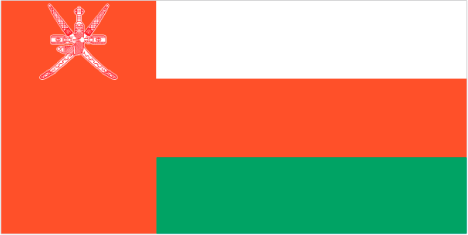To help inspire or plan your trip to Oman, some of its major attractions
for travellers are shown below, including some of the best natural, historical, cultural and adventure sites in the country.
These include all of UNESCO World Heritage Sites for Oman which represent the best
of the world's cultural and natural heritage.
Click on the icons below to focus on specific types of features
(click again to return to all).
|
|
|
|
|
|
|
|
|
|
|
|
 |
|---|---|---|---|---|---|---|---|---|---|---|---|
| Natural | History | Wildlife | Trekking | Cities | Religious Monument | Boat Journey | Rail Journey | Diving | Cultural | Adrenaline | UNESCO WHS |
Historical attractions in Oman
| Sur | |
|---|---|
Sur was once a major trading point with India and East Africa. Famous for building traditional dhow boats, this activity continues today and yard can be visited to see how the craftsmen build these vessels. The town itself is quite historic, a labyrinth of narrow alleyways and old houses with elaborately carved doors. | |
| Nizwa | |
|---|---|
Nizwa was capital of Oman between 751 and 1154 AD and is still considered the cultural capital. The 17th century Nizwa Fortress, built to guard the Sumail Gap during the struggles between the Sultan and radical Imans has recently been renovated. Its walls are 40 metres high, towering over the city and holding 400 gun placements. Nizwa is also famous for its bustling souk and its traditional goat market. | |
| Ancient Forts of Oman | |
|---|---|
There are numerous examples of centuries old forts in the region around Nizwa in Oman. Perhaps the best example is Bahla Fort, built in the oasis of Bahla by the Banu Nabhan tribe between the 12th and 15th centuries. At the foot of the fort lies the Friday Mosque. The 17th century Jibreen castle protected an inner palace. Nakhl fortress is situated in the foothills of the Jebel Akhdar mountains. The 13th century Rustaq Fort is the tallest in the country. UNESCO World Heritage Site: Bahla Fort | |
| Aflaj Irrigation Systems of Oman | |
|---|---|
The aflaj irrigation systems have been in use in Oman since AD 500 and are used to channel water from underground sources for domestic and agricultural use. A key feature of this system is the equitable sharing of scarce resources and ensuring sustainability with communal responsibility for maintenance of the system. Numerous watchtowers have also been built to protect the water systems. Aflaj are particularly prevalent in the oases of the Jebel Akhdar, or Green Mountain, range. UNESCO World Heritage Site: Aflaj Irrigation Systems of Oman | |
| Archaeological Sites of Bat, Al-Khutm and Al-Ayn | |
|---|---|
The archaeological site at Bat in northern Oman forms the most complete collection of settlements and necropolises from the 3rd millennium B.C. in the world and includes the tower at Al-Khutm 2km west of Bat and 21 beehive tombs at Al-Ayn, 22km east to the east. UNESCO World Heritage Site: Archaeological Sites of Bat, Al-Khutm and Al-Ayn | |
| Land of Frankincense | |
|---|---|
Frankincense was one of the most important items of trade in antiquity and a group of archaeological sites in southern Oman are testament to this trade which flourished in this region. These include the frankincense trees that are still found in Wadi Dawkah and the remains of the caravan oasis of Shisr and the affiliated ports of Khor Rori and Al-Baleed. UNESCO World Heritage Site: Land of Frankincense | |


